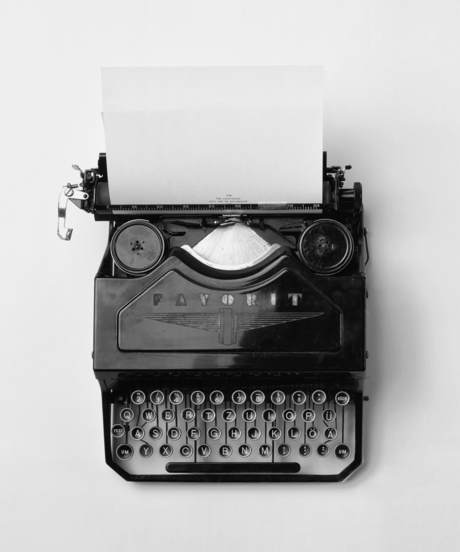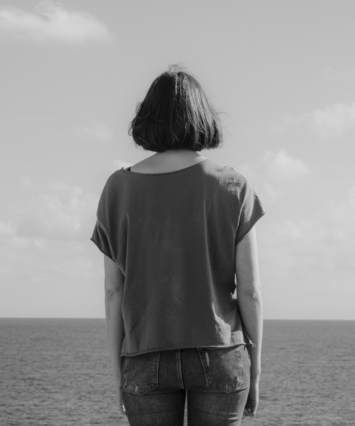Philip's academic and sporting qualities soon singled him out for leadership. At Chesterfield Grammar School he was Head Boy, a prefect of his House, gained his colours in the 1st XI Cricket Team, and was top of both the batting and bowling averages. He later went on to play tennis for Sheffield University.
Philip and I were in the same House at school - Lingard House. We were both very keen on cricket, both played for our house, and 1, too, got my colours. Philip was the better player for I usually batted about no.6 or 7. We were not in the 1st XI at the same time (due to the 2 years difference in our age), but we both played in some of the same House games. We had visions of setting a House batting partnership record for two brothers - but this never materialised! But at home, almost every evening during the summer, when our school homework was done, we would go into the yard (between the kitchen, tennis court and garage) and play cricket until it became too dark to see the ball (a tennis ball).
It was in 1932, while we were still at school, that we came into contact with MRA, then known as the Oxford Group. The minister of our church invited our father and mother to attend a meeting in a Broomhill church. This caught our interest enough for us to attend an Oxford Group House Party in an hotel (Rockside Hydro) in Matlock (Derbyshire) about three quarters of an hour's drive from our home in Sheffield. This was in April 1932, and Philip was 15. He was regarded as too young for the house party at the time, so he did not go with us. It was at this house party that I decided to give my life to Christ, and Father and Mother also decided to give their lives afresh to Him.
Father was so stirred by all he saw and heard that first weekend that he invited many neighbours and business friends to attend the house party during the remaining week. And it was as a result of the interest aroused that he asked for an Oxford Group team to visit Sheffield for a ten day campaign. This team of 50 people, mostly young men and women, came to Sheffield for ten days in August and was led by Roly Wilson. It was during this campaign that Philip too decided to give his life to Christ. This factor increased the close bond between us.
What made Philip decide to study medicine I don’t know. But he went to Cambridge, to Gonville and Caius College for the first three years of his course. He celebrated his 21st birthday while there. Lady Elsa Richmond was the wife of Admiral Sir Herbert Richmond who was Master of one of the Cambridge Colleges - Downing. She was one of the Cambridge MRA team. So the Richmonds offered their home, the Master's Lodge, as the venue for Philip's 21st birthday party. Several car loads of Philip's friends drove to Cambridge for that week-end for a wonderful party. Then we had lunch in a pub in Grantchester next day before returning north. 1 think of that lunch when I read Rupert Brooke's stirring poem 'Grantchester'.
The final two years of Philip's university studies took place in Sheffield. After graduating he became a registrar at the Rotherham hospital in Doncaster Road. After the required period of hospital practice and experience, he volunteered for the army and soon became a captain in the RAMC (Royal Army Medical Corps). Later he was attached to the troops from West Africa, and went into action with them in Burma. While he was in Burma he managed to use some leave to travel to India and to meet up with his brother Edward (Bill) who was serving in India at the time as a captain in REME (Royal Electrical and Mechanical Engineers). At the end of the war Philip accompanied his troops back to West Africa before returning to Britain and to 'civvy street'.
Philip had already decided that on being demobbed (released from the army) he would work with MRA on a full-time basis, at the same time using his medical skills to look after the health of the international team he was working with whether in Europe, America or Asia. At one point, around 1952, he was back in Sheffield for several months heading up an important action in the industrial life of the city with the play 'The Forgotten Factor.' This brought him into touch with many of the industrial leaders of Sheffield, with whom he became good friends. But he was not to return again to his home town for more than short visits to see our mother, until 1961 when he was dying of leukemia.
Philip gave the last years of his life (perhaps nine or ten) to Asia, particularly to India and then to Burma. He also made visits to Thailand, Nepal, and other countries in that region. Frank Buchman, the man who started MRA, sent him to India to work with Rajmohan Gandhi, and to prepare for Buchman's own visit with an international team of 200. They were, in many ways, the most fruitful years of his life, and he became much loved by leaders and ordinary people in those lands. He became a good friend of some of the leading Buddhist monks in Burma, some of whom, as a result of his work, visited Caux in I960. But he was not able to travel with them to Caux as he was already in St Bartholomew’s Hospital in London.
However, he came out of hospital for a period, and in time to welcome the monks to 45 Berkeley Square, at that time Frank Buchman’s home in London, where the monks were to stay. Though increasingly weak from the leukemia, Philip traveled to Yorkshire where he stayed with his brother Bill and Louise in Hathersage and even attended a showing in a main cinema in Rotherham of the ‘Crowning Experience’. But soon he had to return to Bart’s Hospital in London for another blood transfusion. But the doctors could do nothing more and Philip died on June 18th but not before welcoming his nephew Edward (aged nearly 8) with his mother, to his bedside.
English


